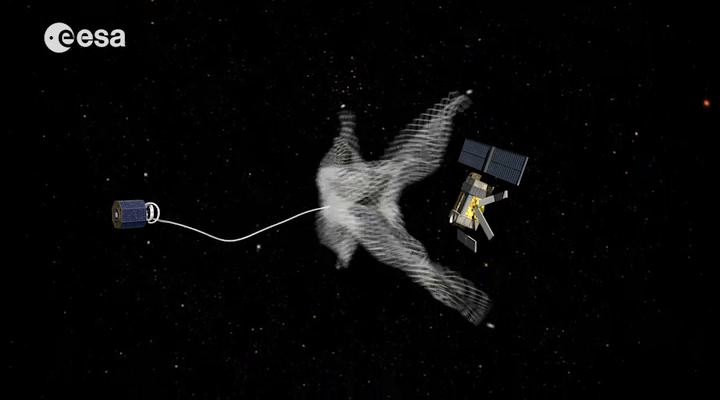
Humanity must act now to reduce the vast amount of space junk around Earth to keep the problem from getting completely out of hand, scientists say.
The huge and ever-growing cloud of debris around Earth poses a real threat to satellites and our way of life, researchers stressed this week at the 6th European Conference on Space Debris in Darmstadt, Germany.
"There is a wide and strong expert consensus on the pressing need to act now to begin debris removal activities," Heiner Klinkrad, head of the European Space Agency's Space Debris Office, said in a statement today (April 25). "Our understanding of the growing space debris problem can be compared with our understanding of the need to address Earth’s changing climate some 20 years ago." [Space Junk Photos & Clean-Up Concepts]
Earth's enormous debris cloud is composed primarily of spent rocket bodies, dead satellites and the fragments generated when these objects collide.
NASA estimates that there are currently 500,000 pieces of space junk bigger than a marble and 22,000 as large as a softball. The number of flecks at least 1 millimeter in diameter probably runs into the hundreds of millions.
These pieces are moving so fast that even a tiny shard could knock out one of the 1,000 or so operational satellites currently orbiting the planet. That's potentially a big problem in our technological society, which is increasingly dependent on satellites to provide communications, Earth observations and other services.
In 2007, an anti-satellite test by China created a vast cloud of debris that continues to plague spacecraft operators today. Another major event occurred in February 2009, when a dead Russian military satellite slammed into an active U.S. communications satellite to create two new clouds of space junk.
Get the Space.com Newsletter
Breaking space news, the latest updates on rocket launches, skywatching events and more!
A two-pronged approach is needed to keep space debris under control, scientists said at the conference.
For one thing, future missions must be sustainable, with proper disposal of spacecraft at the end of their operational lives. And the world needs to begin removing debris from orbit soon, or else risk an escalating and self-sustaining cascade of collisions over the coming years.
The projected high price tags of such efforts should not keep them from going forward, experts said.
"While measures against further debris creation and actively deorbiting defunct satellites are technically demanding and potentially costly, there is no alternative to protect space as a valuable resource for our critical satellite infrastructure," Klinkrad said. "Their direct costs and the costs of losing them will by far exceed the cost of remedial activities."
Missions demonstrating efficient and effective cleanup methods need to be given high priority, researchers further stressed, describing debris removal as a global issue on which the world must work together.
Follow Mike Wall on Twitter @michaeldwall and Google+. Follow us @Spacedotcom, Facebook or Google+. Originally published on SPACE.com.
Join our Space Forums to keep talking space on the latest missions, night sky and more! And if you have a news tip, correction or comment, let us know at: community@space.com.

Michael Wall is a Senior Space Writer with Space.com and joined the team in 2010. He primarily covers exoplanets, spaceflight and military space, but has been known to dabble in the space art beat. His book about the search for alien life, "Out There," was published on Nov. 13, 2018. Before becoming a science writer, Michael worked as a herpetologist and wildlife biologist. He has a Ph.D. in evolutionary biology from the University of Sydney, Australia, a bachelor's degree from the University of Arizona, and a graduate certificate in science writing from the University of California, Santa Cruz. To find out what his latest project is, you can follow Michael on Twitter.









